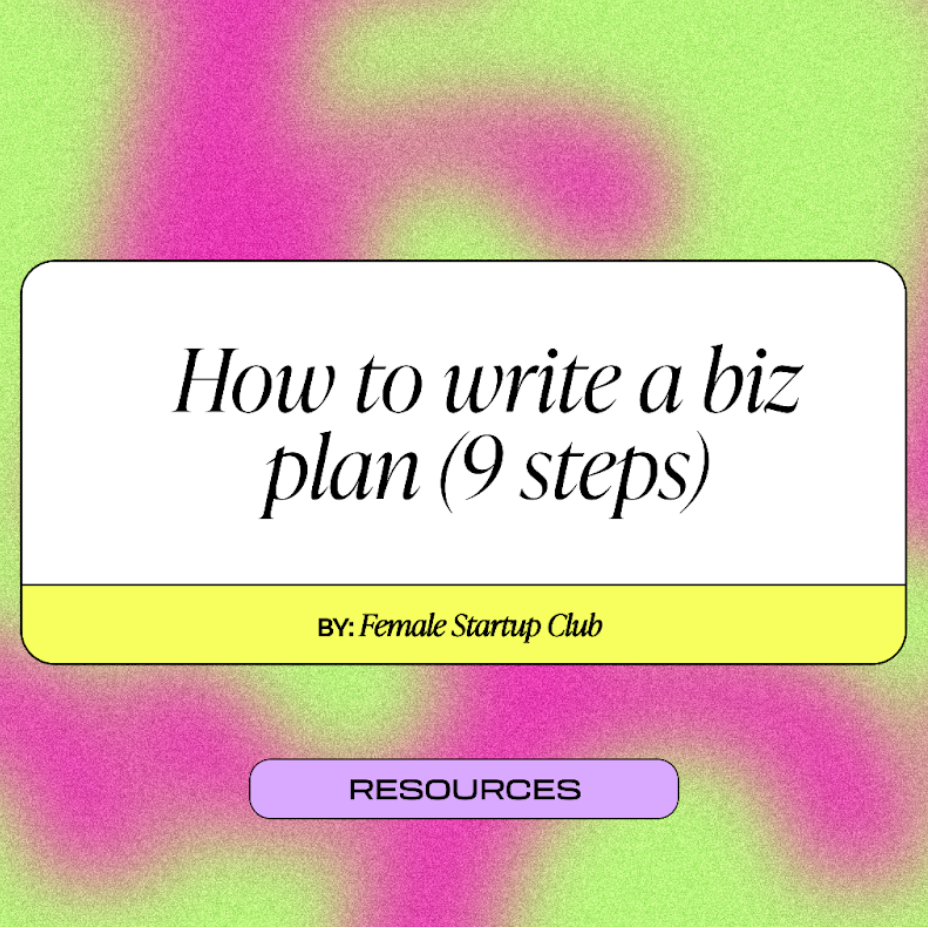
One-third of high-growth businesses worldwide are now run by women (who run the world? *almost* girls). As female entrepreneurship steadily increases worldwide, you might consider writing your own effective business plan. The entrepreneurship landscape has drastically changed over the last decade, and whilst competition is hot, the barrier to entry is lower than ever before. All you need is an idea and the right tools, and thanks to e-commerce, you can get started with just a laptop and an internet connection. Hold on, let me correct that. With an idea, the right tools, and an elaborate business plan. Starting a business is not as simple as getting an idea. Most founders will hail writing a business plan as your first step. This will be your GPS for structuring, running, and growing your new company. Your new best friend.
In the most simple of terms, to write an effective business plan, you need to have a business idea and do research. The plan should include an executive summary and description, explanations about management, target market, and logistics, and a market analysis and a marketing plan.
Stick around if you want to know more! In this article, we will explain why you need an effective business plan in the first place and cover the complete step-by-step process.
Why Do You Need an Effective Business Plan?
We’ve all been there. You have a brilliant idea for a company, you make a rough plan in your head, and you know this will succeed. Why should I waste all this time writing a business plan? The truth is that you will need an effective business plan to succeed. Don’t see this as a chore but as a handy guide to assist you throughout your entrepreneurship journey.
You need a business plan to know your business, your target audience, and the industry market better. It will help you develop your idea and make better decisions for your business.
If you’re still not convinced, here are some reasons why you should make a business plan:
● To present your idea to potential partners or investors: If someone is willing to invest money and time in your venture, they need to look at essential details of your business, like a financial plan, market analysis, and more. Help yourself by creating these things in advance, making this process smoother.
● To understand your business better: This is key! Writing a business plan requires careful calculations and research, which can help you understand your idea's potential weaknesses and strengths. It also enables you to assess your target market and competition more thoroughly.
● To assess risks: You can see potential issues you hadn’t considered while writing your plan. As a result, you can avoid opportunities that seem too risky and make the necessary changes.
● To determine your plan's feasibility: An original idea isn’t enough; it must be achievable and generate profits. Your business plan will tell you whether it’s possible and what you need to do to make your idea a reality.
What Do You Need To Get Started on Your Business Plan?
Before writing the plan, you need to have an idea, but it doesn’t have to be an original, never-seen-before idea. A coffee shop, for example, can be a tremendous success if you know how to differentiate it from your competition. This is SUCH an essential point that we so often forget. Repeat after me: you don’t need to have invented this brand-new thing to have a differentiator. An ethos, a unique story, and even a price point can all do that. Get clear on which one it’s going to be from you.
To start your business plan, you need a good business idea and a way of differentiating it from others. You should also research anything related to your type of business.
You’ll also need to do a lot of research.
Once you have a clear idea of the business you want to start, you should study your target audience, competition, and logistics issues. Along the way, you may also get some new ideas to help you make your business better. This is that sweat equity we all talk about. That isn’t the most riveting, but it’s an essential part of the process. You’re guaranteed to walk away with new perspectives and fresh ideas.
When you have this all in one place, it’s time to hop into a business plan template and start typing away. People may say there isn’t a wrong way of doing a business plan, but specific ways are better and more attractive to investors than others.
You can make a thorough, traditional plan or a lean, short version that only includes the most essential information. That’s totally up to you.
The Process of Writing a Business Plan
Sitting down and writing the business plan may sound intimidating and complicated, but we’re here to hold your hand through the process. Use this 9-step guideline below, and you’ll be finished before you know it:
-
The executive summary should concisely summarize your plan, including descriptions of the company, product or service, and target market.
-
The business description should tell the reader who you are and what you aim to achieve with your business.
-
Management will describe what type of company yours is and who is in charge of it. You should include partners and management teams and their respective duties.
-
The target market is pretty self-explanatory. Based on your research, you should outline the segments of the market that are more likely to buy your product or service.
-
Market analysis should thoroughly examine all the crucial actors in your chosen market, including competition, suppliers, governmental agencies, and more.
-
The timeline should outline all your steps to start and grow your business. You should establish milestones to measure your progress.
-
Logistics will describe how you will achieve everything described previously. Using your research, create an operational plan that outlines every supply chain link.
-
The marketing plan includes your marketing strategy to market your business, including marketing tools and platforms.
-
The financial plan should give readers an idea of how feasible your project is financially. It should include the income statement, cash-flow statement, and balance sheet.
Summary
Didn’t we tell you? You will have a plan ready before you know it to show to your potential investors or hires (or to hide in your bottom desk drawer). Remember: even if you don’t plan to show this business plan to anyone, writing it will still be invaluable to guide you through the process. So let’s get started today!
If you loved this article, you would greatly benefit from signing up for our weekly newsletter. You’ll receive knowledge from the world’s most successful female entrepreneurs, thought leaders, and women in business - straight to your inbox.



